Over the last few years, many grantee-partners of the Jim Joseph Foundation have created or expanded regional operations. The rationale for, and approach to, this work varies from one organization to the next. And in some cases the staff lead this regional work from home; in other instances the organizations have a regional office—a hub of sorts. Regardless of these differences, these organizations, along with the Foundation, recognize the multiple benefits of this regional structure. Given the costs associated with this, we also understand why organizations might be hesitant to build out their work in this way. That in mind, we asked some grantee-partners to share why they operate in this way, challenges they have faced (and hopefully overcome) and positive outcomes they experience. Responses include themes around organizational nimbleness, deeper collaborations, donor cultivation, customized programming and pilot projects, and much more. Here’s what grantee-partners shared:
Hadar Institute – Designed to Meet Demand
When Hadar opens a new regional office, it’s because there is both broader demand for our style and approach to learning and a critical mass of people who share our vision and are asking us to invest in their city. One of our main goals is to collaborate, not compete, with the institutions that are already there. We spend months speaking to people on the ground— experts in the local community and organizational leaders, so we can be additive to the Jewish community. One of the challenges of regional expansion is that by nature it is a small team, often only one person, and they end up being a mini-start up in the context of a larger organization. That is why we look for candidates with entrepreneurial energy.
We’ve received a lot of positive feedback from communities where we’ve opened regional offices. Our directors are educators/rabbis, which allows for learning to happen throughout the year. Unsurprisingly, people feel a closer connection to Hadar when there is a local presence, and they end up participating in a broader array of Hadar’s offerings, beyond their local programs. They are also more likely to invest in the organization when the organization invests in them. And of course, our regional directors can forge deeper relationships with people since they are a real part of these communities and not swooping in as visitors. This approach has helped Hadar be a successful convener and community-builder across the country.
– R. Elie Kaunfer, President and CEO, Hadar Institute
Moving Traditions – Aligned with a Vision for Greater Reach
As Moving Traditions seeks to double the number of Jewish youth we engage in our programs by 2025, it made sense to think bigger. We are no longer targeting key cities – we’re targeting North America. Having regional directors working from home offices throughout the United States enables us to build community and relationships, to better serve our partners, and to introduce more teens and parents alike to Moving Traditions’ suite of programs. For instance, we now have a Southern Director who is helping bring our programs to places like Florida and Texas where Jewish teens—particularly LGBTQ+ teens—could really use the circles of support that our programs provide.
– Shuli Karkowsky, CEO Moving Traditions
Foundation for Jewish Camp (FJC) – Enabling Innovation and Quick Mobilizations
Our regional strategy has been an important element in our ability to remain nimble, understand and address needs of local camps, and accelerate innovation through different pilots in different regions. FJC’s West Coast region, for example, has been working collectively with California camps to explore options for property insurance, for which the premiums have skyrocketed. In the Southeast, we have piloted a partnership with Hillel to help camps recruit/retain counselors and to help Hillels identify and afford much-needed additional year-round staff members. Our regional offices in LA and Chicago played a critical role in engaging local funding support in response to the pandemic. Finally, we could not have secured the sponsorships necessary to produce our record-setting Leaders Assembly in December in Atlanta without our regional focus in the Southeast.
– Jeremy J. Fingerman, CEO, FJC
Hillel’s Campus Support Directors, a program funded by The Marcus Foundation – Building a Culture of Collaboration
Our organization is set up to assist Hillel’s 1,200 professionals in the field to maximize their impact on the lives of Jewish students on college campuses. As just one example, for the past 5 years, we’ve introduced a model in the state of Florida to support those campuses and students more effectively and efficiently. The seven Florida Hillels have developed a unique and effective model to work together to support each other and collaborate on key projects. Focusing on the Florida Hillels’ executive directors and their relationships, we created a culture of collaboration where these Hillels regularly share information related to fundraising and advancement, craft joint reporting on multiple Federation grants, and share staff training, onboarding, and information about prospective students.
I convene these executive directors every three weeks to discuss topics that range from creating sustainability through endowment and legacy campaigns, to the specifics of staff supervision. Although the campuses and the Hillels themselves are quite different, because of the coordination and support from Hillel International and the close working relationships they have built, these Florida Hillel executive directors describe this group as their most important cohort of colleagues. Over the past few years, we have run in-state and travel programs for students at all Florida campuses, brought board chairs and executive directors together to share lessons learned and explore collaborations, and confronted antisemitism across campuses in a coordinated, strategic way.
– Debbie Pine, Campus Support Director at Hillel International
Jews of Color Initiative – A Physical Office Still Offers Benefits
Opening a Jews of Color Initiative (JoCI) office in New York solidified our footprint in a region with a large Jews of Color (JoC) presence and has woven us into local culture, communities, and events. Our New York Hub has proven to be an impactful pilot for JoC in the region and for JoCI organizationally. One challenge is that regionally-specific offices and programs can limit who we serve. For example, our Incubator was restricted to those in the Greater New York area, though we saw many instances where the program could benefit leaders outside of the region. An additional challenge of securing physical office space is the current workforce trend toward more work-from-home and hybrid workplace environments. While our offices weren’t always used, they did create a valuable physical address for co-working teams, programs, and community engagement. We also evaluated location options with great diligence, ultimately selecting a Manhattan location that is easily commutable from various NYC boroughs, though not specific to the residencies of JoC.
– Riki Robinson, Program Director of the New York Hub of the Jews of Color Initiative
Keshet – Targeting Populations in Need of Support
Keshet’s strategy for geographic expansion focuses on states with significant Jewish populations and anti-LGBTQ+ political climates. We opened an office in Florida two years ago and in Texas earlier this summer, resulting in an outpouring of energy and interest to get involved with Keshet. At a time of unprecedented legal assaults on LGBTQ+ people, particularly transgender youth, local leaders are eager to send the message that in the Jewish community, our LGBTQ+ community members are seen, loved, and cherished.
– Idit Klein, President and CEO, Keshet
Repair the World – Moving From a Local to a Regional Structure
In 2022, Repair moved into a regional programmatic and development structure to provide greater support and accountability across our Repair communities, as well as create cost savings to ensure we use funding and support strategically. We hired regional directors who provide executive leadership, coaching, and organizational guidance to a group of Repair communities, and regional development directors, who hold relationships with the local lay and professional leadership to focus on sustaining local giving and bringing new individual and institutional partners to support our communities.
We’ve learned from our peers and seen over the past year that the regional model strengthens consistency across our programming, fosters increased collaboration across communities in the same region, and provides more opportunities for staff and fellows to come together to learn and connect. The added support also frees up local leadership to focus on the service and Jewish learning programming, since much of the fundraising responsibility and some relationship building has been transferred to the regional team.
To set up this model for success, we ensured the hiring process for the regional roles tested which candidates could demonstrate a clear ability to learn new landscapes quickly and build relationships in a remote environment. We have also committed to building local advisory councils of lay leaders in each community to support Repair’s local programs. A year into the rollout of this model, we have seen qualitative and quantitative evidence that the model is on a pathway to success, and know that the added support for strong connections between programming and development is key to this success.
– Kate O’Bannon, Chief Strategy Officer, Repair the World
The common link in all these examples is that each organization saw a reason, aligned with its mission and audience engagement goals, to deploy a regional approach. Careful planning and hiring were instrumental in making these ventures successful. Certainly other aspects were part of the “how” as well. We are happy to connect any people interested in learning more about a specific regional model to the appropriate organization highlighted here (reach out to [email protected]). By sharing best practices and insights, more organizations will be able to bring meaningful Jewish learning and engagement experiences to people around the country.
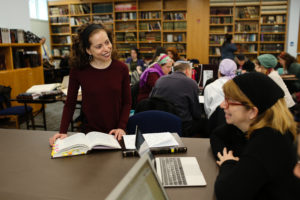 Maharat opened in 2009 with just three students, two employees and a $100,000 budget. Today Maharat has 36 students, 19 employees, and a $2.6 million budget. In just 12 years, Maharat has graduated 49 women who are serving as clergy across the Jewish community in synagogues, schools, hospitals, universities, and Jewish communal institutions.
Maharat opened in 2009 with just three students, two employees and a $100,000 budget. Today Maharat has 36 students, 19 employees, and a $2.6 million budget. In just 12 years, Maharat has graduated 49 women who are serving as clergy across the Jewish community in synagogues, schools, hospitals, universities, and Jewish communal institutions. support. Maharat asks their program interviewees about their support network because “to do this work you have to have a good support network.” Why? Change is hard. Maharat’s strategy is simply “feet on the ground”—having women occupy positions of leadership to show and prove what they can do.
support. Maharat asks their program interviewees about their support network because “to do this work you have to have a good support network.” Why? Change is hard. Maharat’s strategy is simply “feet on the ground”—having women occupy positions of leadership to show and prove what they can do.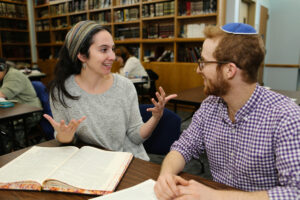 Beyond gender, Maharat is trying to open up Jewish culture—by giving women access to authority, to being teachers, and to being authorities on rabbinic texts. She highlights that they are sending the message that leadership—the structure and power of dynamic leadership—should be more decentralized with more voices:
Beyond gender, Maharat is trying to open up Jewish culture—by giving women access to authority, to being teachers, and to being authorities on rabbinic texts. She highlights that they are sending the message that leadership—the structure and power of dynamic leadership—should be more decentralized with more voices: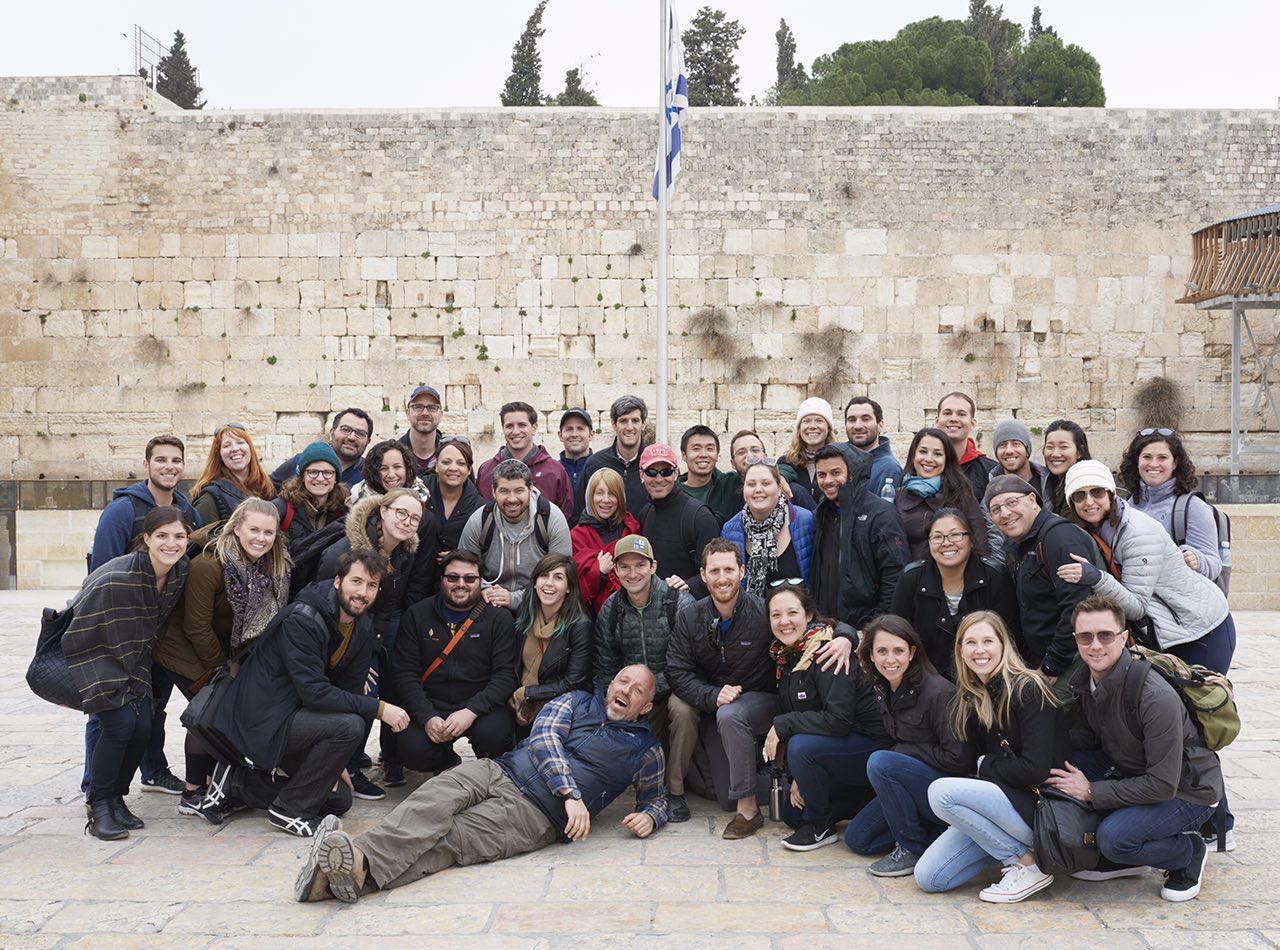 Mike Wise and Avi Rubel conceptualized HMI after the 2013 Pew report on the American Jewish population, which noted the high rate of interfaith marriage and was often defined as a problem in the Jewish community. Mike and Avi wanted to define it as an opportunity to engage young couples by creating a welcoming community for them. Many couples in this life stage do not yet have other couple friends; rather, they often have individual friends from other life experiences. HMI wanted to engage couples while they were still making decisions about their families and their futures—and whether they envisioned a connection to the Jewish community as being a part of that.
Mike Wise and Avi Rubel conceptualized HMI after the 2013 Pew report on the American Jewish population, which noted the high rate of interfaith marriage and was often defined as a problem in the Jewish community. Mike and Avi wanted to define it as an opportunity to engage young couples by creating a welcoming community for them. Many couples in this life stage do not yet have other couple friends; rather, they often have individual friends from other life experiences. HMI wanted to engage couples while they were still making decisions about their families and their futures—and whether they envisioned a connection to the Jewish community as being a part of that.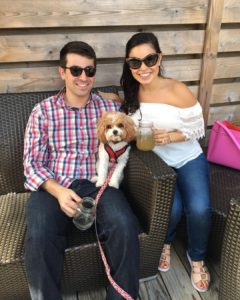 to ensure that anyone is able to travel on their trips. They are also expanding their board and their staff to include more people of color and working towards increasing the diversity of the couples who travel with HMI.
to ensure that anyone is able to travel on their trips. They are also expanding their board and their staff to include more people of color and working towards increasing the diversity of the couples who travel with HMI.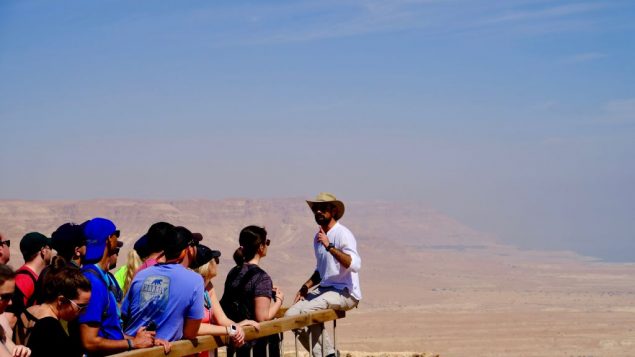 HMI is focused on controlled, intentional growth and ensuring they can deliver the trips and programs that best serve their groups. Currently HMI says no to three couples for every one they accept nationally; they don’t want to add more trips unless they’re set up for meaningful post-trip follow-up, which includes staffing and support on the ground. HMI also has more communities that want to partner, but HMI continues to be deliberate in the communities they select to ensure that the trip is not just an empty experience, but fulfills their goal:
HMI is focused on controlled, intentional growth and ensuring they can deliver the trips and programs that best serve their groups. Currently HMI says no to three couples for every one they accept nationally; they don’t want to add more trips unless they’re set up for meaningful post-trip follow-up, which includes staffing and support on the ground. HMI also has more communities that want to partner, but HMI continues to be deliberate in the communities they select to ensure that the trip is not just an empty experience, but fulfills their goal: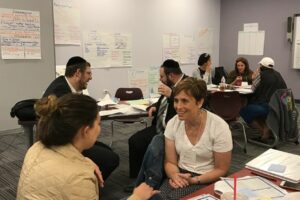
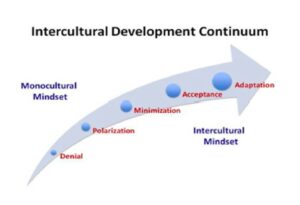
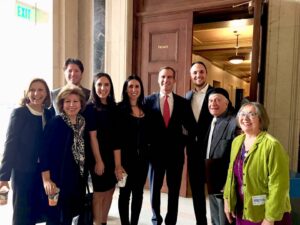 When Israel was founded, 650,000 of the one million Sephardic Jews from Middle Eastern and North African countries fled to Israel as stateless refugees and today their descendants comprise more than half of Israel’s Jewish population. The remaining refugees dispersed to countries throughout the world, and their experiences have been ignored and forgotten. Here in California there is an estimated 200,000 Mizrahi Jews, with the Iranian Jewish community in Southern California comprising one of the largest Middle Eastern diasporic communities in the world. Sarah’s feeling of disconnectedness from Sephardic community was shared by many of the children and grandchildren of JIMENA’s founders when they created the organization in 2002. Shortly after 9/11, a group of San Francisco Bay Area Jews from North Africa began to gather for the “purpose of redress and acknowledgement of what was taken from them and destroyed,” Sarah notes.
When Israel was founded, 650,000 of the one million Sephardic Jews from Middle Eastern and North African countries fled to Israel as stateless refugees and today their descendants comprise more than half of Israel’s Jewish population. The remaining refugees dispersed to countries throughout the world, and their experiences have been ignored and forgotten. Here in California there is an estimated 200,000 Mizrahi Jews, with the Iranian Jewish community in Southern California comprising one of the largest Middle Eastern diasporic communities in the world. Sarah’s feeling of disconnectedness from Sephardic community was shared by many of the children and grandchildren of JIMENA’s founders when they created the organization in 2002. Shortly after 9/11, a group of San Francisco Bay Area Jews from North Africa began to gather for the “purpose of redress and acknowledgement of what was taken from them and destroyed,” Sarah notes. educating people in that region of the world about Sephardic Jews from the Middle East and North Africa. This is a growing area of work, premised on important relationships.
educating people in that region of the world about Sephardic Jews from the Middle East and North Africa. This is a growing area of work, premised on important relationships.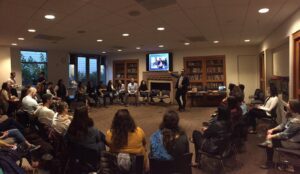 In recent years, the plethora of studies about different Jewish demographics exposed a void in JIMENA’s toolkit. JIMENA now is laying the groundwork for a major study of Mizrachi and Sephardic Jews. It has a 50 member Sephardic Advisory Committee—comprised of rabbis, community leaders, philanthropists, and scholars—currently discussing what such research should focus on and seek to find.
In recent years, the plethora of studies about different Jewish demographics exposed a void in JIMENA’s toolkit. JIMENA now is laying the groundwork for a major study of Mizrachi and Sephardic Jews. It has a 50 member Sephardic Advisory Committee—comprised of rabbis, community leaders, philanthropists, and scholars—currently discussing what such research should focus on and seek to find.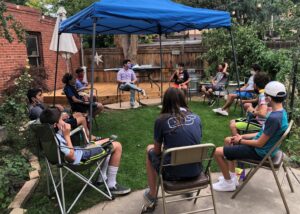

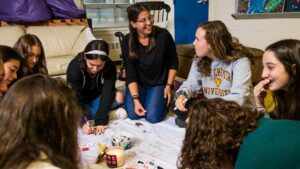 While the field of Jewish education and engagement today sees building mental health as essential, Moving Traditions has been pioneering this approach for 16 years. Two key learnings that deeply inform its work today are the ideas that:
While the field of Jewish education and engagement today sees building mental health as essential, Moving Traditions has been pioneering this approach for 16 years. Two key learnings that deeply inform its work today are the ideas that: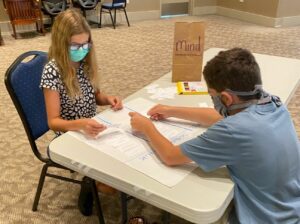 Broadening Impact and Looking Ahead
Broadening Impact and Looking Ahead